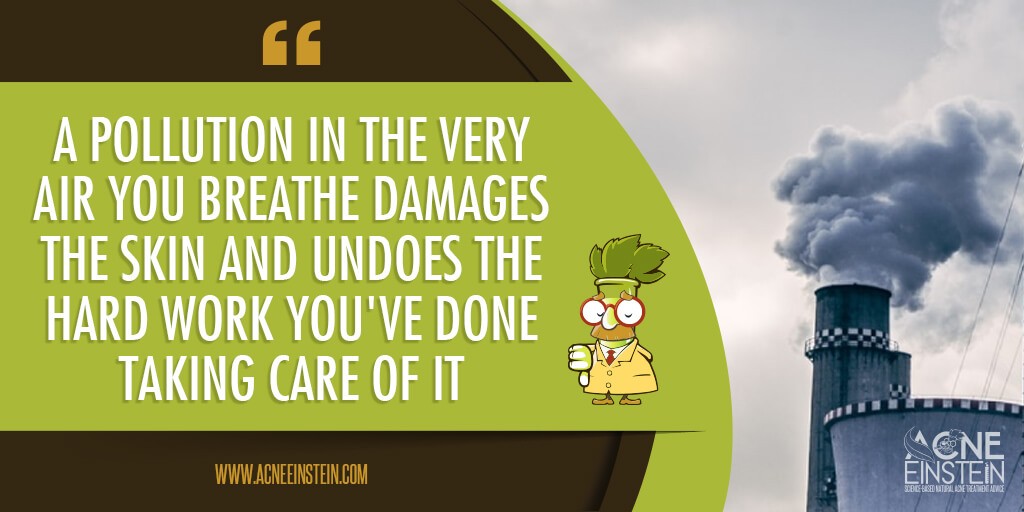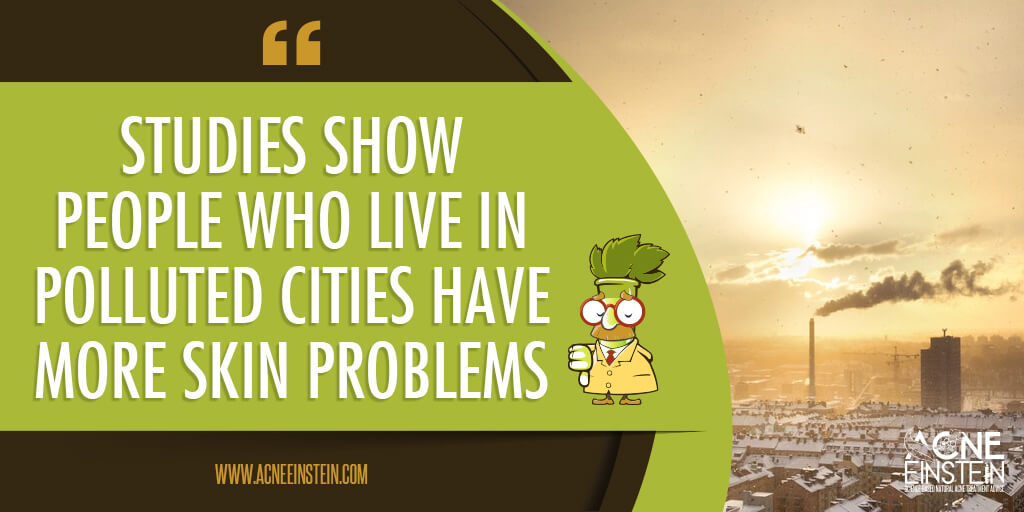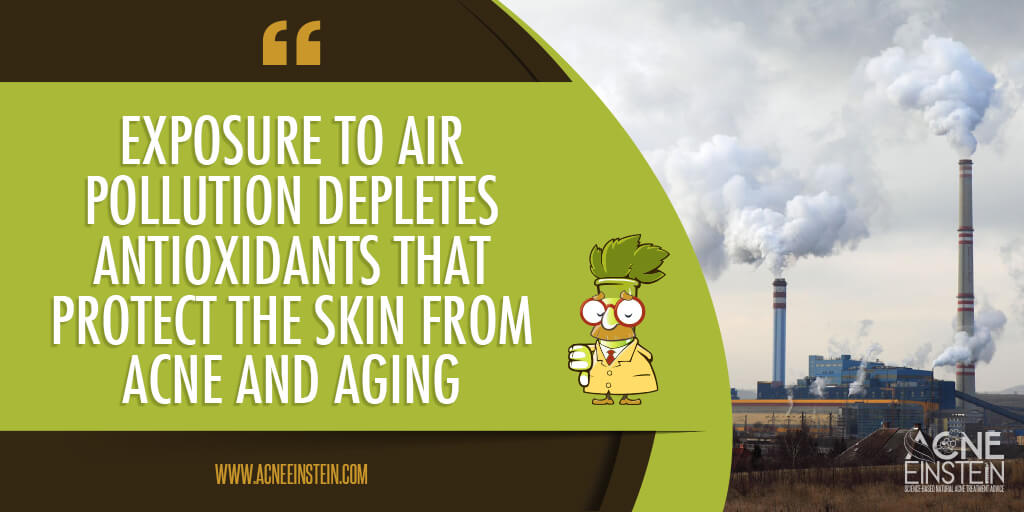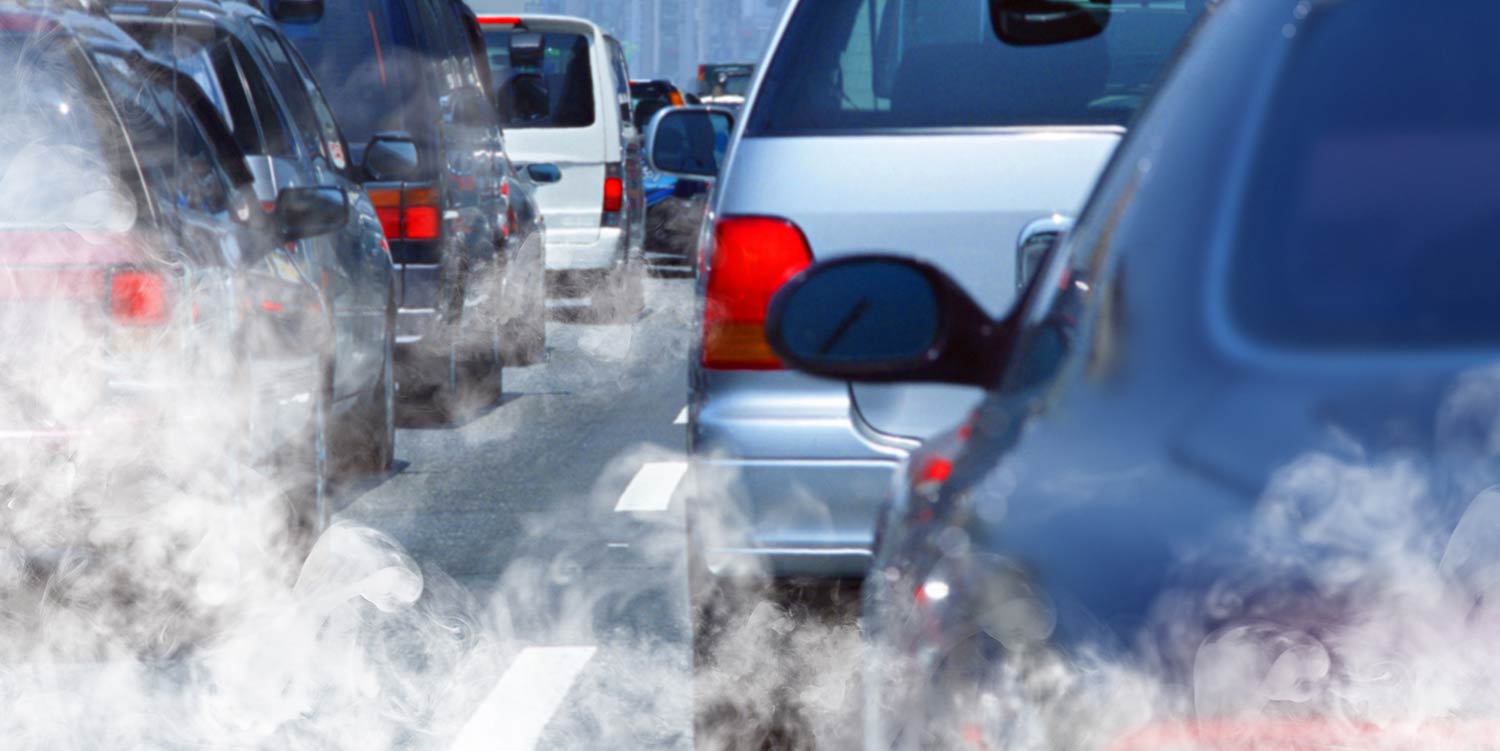Looking after your skin is important, and nowadays many people do as much as they can to keep their skin in great condition. But did you know that pollution and chemicals in the very air we breathe damages the skin, and undoing some of the hard work you’ve done cleansing, toning and moisturising?
Many of the world’s major cities are now facing a problem with air pollution. In the UK, for example, 16,355 people died in 2012 as a direct result of air pollution, and thousands more experience respiratory problems. Skin health is also a huge issue, but one which is frequently overlooked when discussing the problems and dangers of air pollution.
But what do we mean when we say air pollution? Many people instantly think of smoggy, smoky air – but there’s more to air pollution than that. It doesn’t just mean the fumes and chemicals from vehicles and factories – it’s also things like cigarette smoke (which contains thousands of toxins), UV radiation, dust particles and the chemicals from aerosols. These are substances your skin is exposed to on a daily basis, with little to no protection – and it could be having a detrimental effect.

Air pollution has been linked with a number of skin diseases
Air pollution is linked with a number of serious illnesses, many affecting the respiratory system. The International Agency for Research on Cancer (IARC) found that exposure to air pollution contributed to 3.2m premature deaths worldwide in 2010, with 223,000 of those deaths coming from lung cancer. The World Health Organisation has also listed the most common illnesses caused by air pollution, which include ischaemic heart disease, chronic obstructive pulmonary disease and acute lower respiratory infections in children.
But did you know that air pollution can also harm the skin? Residents in areas with higher levels of air pollution have been found to experience more skin problems, with three recent studies proving this theory. A study of 189 people in Mexico (96 living in Mexico City, 93 living in Cuernavaca, a less pollution area) found that those living in Mexico City produced more oil than their rural counterparts, and showed increased signs of skin damage (manifesting in higher levels of oxidized proteins on the skin).

A similar study took place in Shanghai, China, with 79 people living in a densely populated and highly polluted city center, and a further 80 living in a more agricultural region. Those in the more polluted area had more lactic acid (a sign of skin damage) on the skin, and the researchers noted lower levels of squalene. This led them to believe that the squalene which was originally present had been oxidized into squalene peroxide – a substance known to cause acne. Researchers have shown that oxidation of squalene into squalene peroxide is the trigger that starts acne.
A third study in China tracked no less than 70,000 patients over the course of two years, for more comprehensive results. The results of this study found that the higher the ambient ozone level was in the area, the more people visited the emergency room for skin-related problems. These studies demonstrate that pollution in the air can cause or exacerbate a multitude of skin diseases, as well as causing real skin damage.
So why is air pollution so harmful to overall health?
As mentioned earlier, air pollution does far more damage than simply speeding up the appearance of crow’s feet. One of the most dangerous side-effects of air pollution exposure is an increase in the number of free radicals in the skin. Free radicals are damaging to the human body, and they can seriously deplete levels of antioxidants like vitamins C and E.

A study conducted by the New York Academy of Sciences discovered that pollutants in the air, as well as cigarette smoke and overexposure to UV rays, contributes to the generation of free radicals and also directly contributes towards acne. Without the essential antioxidants in the skin, the ageing process is sped up even further, with skin losing its plump vitality and elasticity.
We’ve also covered the fact that air pollution turns squalene into squalene peroxide, which causes acne. This is is also linked with the severity of air pollution in a certain area. Because of the way squalene responses to pollutants, those in areas of high pollution are more likely to experience severe, cystic acne than those in less polluted areas.
Then there’s the damage that air pollution causes to the existing skin barrier. This allows bacteria and particulate matters (the dangerous substances found in air pollution) to penetrate further into the skin, causing more serious skin problems that are harder to treat.
How can I protect myself against air pollution?
If reading this has made you determined to protect your precious skin against the pollutants out there, here are a number of ways in which you can mitigate the damage and restore your skin’s natural barrier:
- Apply antioxidants topically. Studies have shown that applying vitamins C and E topically to the skin can mitigate UV damage to the skin, which will reduce the signs of ageing and lessen the risk of developing acne.
- Make sure your diet is packed with antioxidants, too. Berries are packed with antioxidants which will help prevent free radicals from causing too much damage, and a study has found that drinking green tea can also offer some level of UV protection.
- Wash your skin regularly in order to remove pollution from the surface. Try to ensure you’re not washing too often, and only use products which have the same pH as the skin (between 5 and 6). Otherwise you could strip the skin of its naturally-occurring protective barrier and cause more damage.
- Use sunscreen every day, even if it’s not bright and sunny. The sun can penetrate clouds, and it’s vital to ensure your skin is protected from UV rays around-the-clock.
- Moisturise regularly to repair and boost your skin’s natural barrier. You can find many moisturisers on the market nowadays which have added vitamin E, to help bolster that barrier between the pollutants and your skin.
Air pollution can cause untold damage to the skin and to the rest of the body. But by following these tips, you can ensure you’re doing everything possible to protect your body’s largest organ, and keep your face looking youthful and blemish-free.


